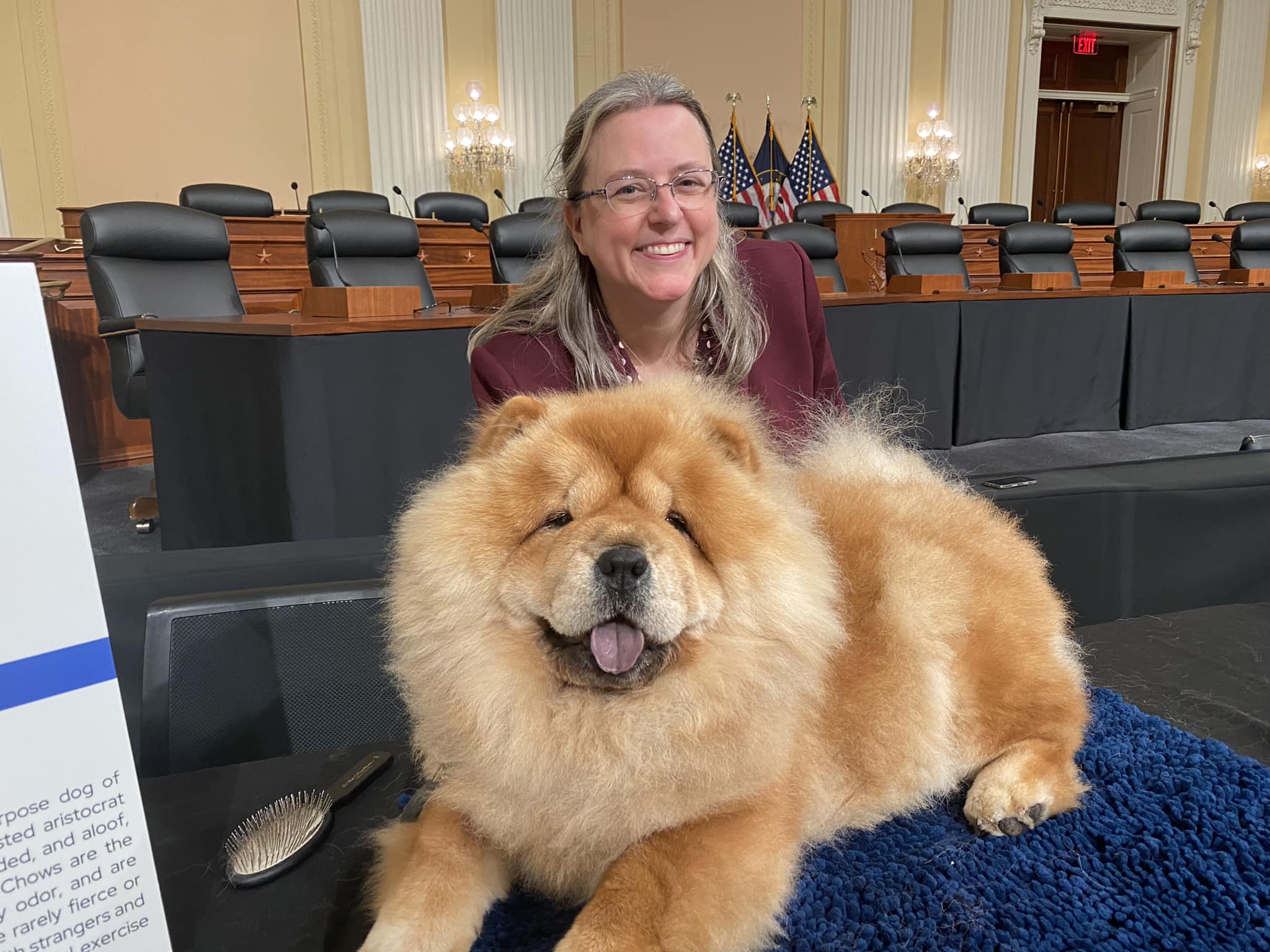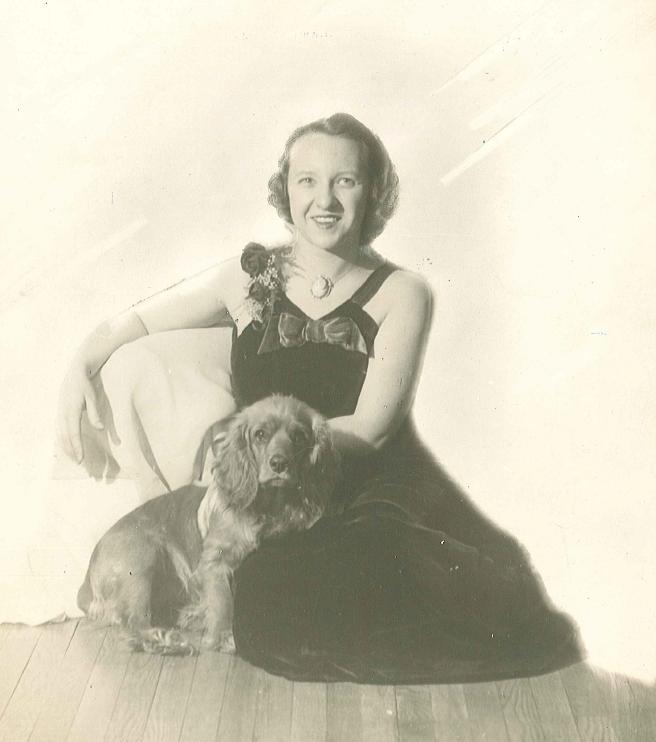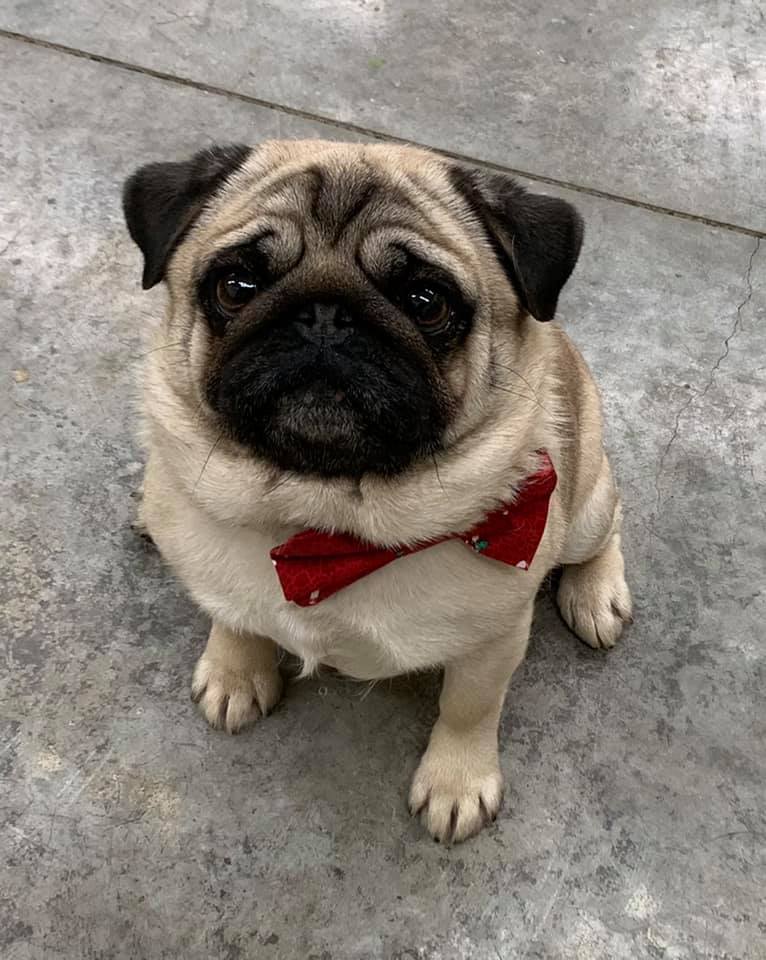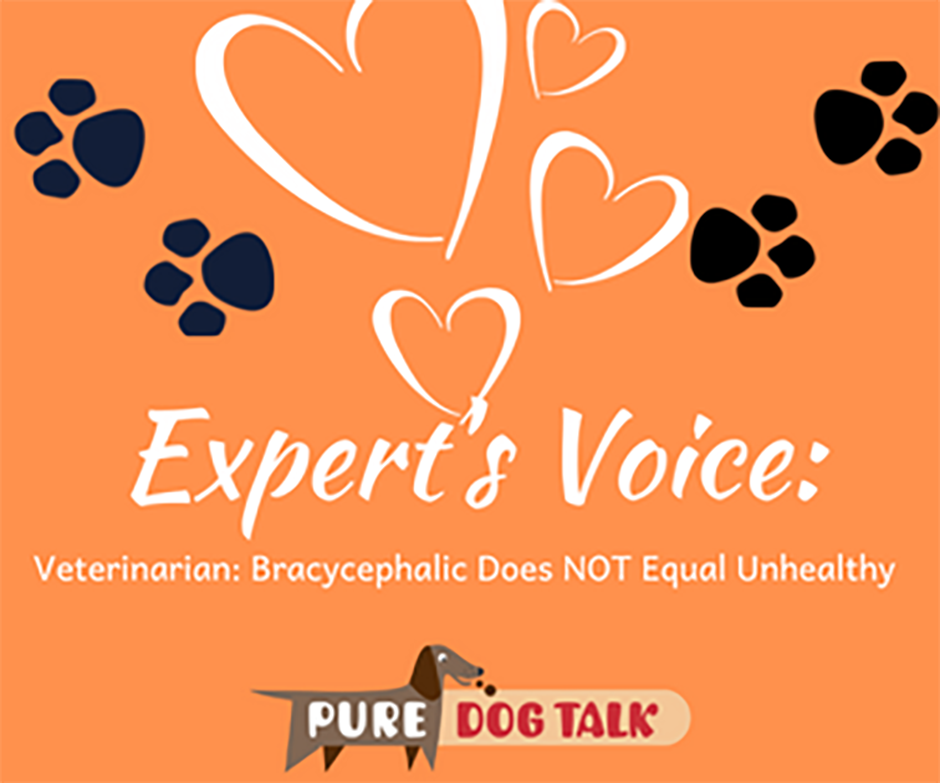686 – How to Battle Anti Breeder Legislation Around the US
How to Battle Anti Breeder Legislation Around the US

Jennifer Clark joins fanciers at an event in Washington DC.
Host Laura Reeves is joined by Jennifer Clark, AKC director of legislative outreach, to talk about legislation in Oregon and what’s happening elsewhere in the country and why it matters that fanciers get involved.
“For those who are not in Oregon, or may not have been following it,” Clark said, “what this bill basically said initially is that the state has to start regulating anyone who breeds and sells in the state. So if you sell one dog, you suddenly have to be regulated. We don’t have any idea what these regulations are going to be.
“That was a huge concern for us because why should someone who’s breeding and raising one litter in their home be regulated and inspected by the state? A lot of times in states when they’re regulating breeders, it’s on a commercial level. They’re regulating the large commercial facilities or people who are doing this professionally and not those who are hobbyists or financiers.
“And there are very specific guidelines that are often in place, such as drainage in your floors and kennel setups and temperature records. All these things like flooring are great if you have a large kennel building, but what if that’s your living room? Then how are you going to be able to comply? Does that mean I have to tear up my carpet because it can’t be completely sanitized? Do I have to put a drainage system in my laundry room? And does that mean that state has to come in and inspect my kitchen because that’s where the whelping pen is. How do we handle these questions? So that was a huge concern.
AKC Government Relations, NAIA, local clubs and fancier reaction resulted in an amendment to state ‘more than two litters,’ Clark added and the bill is currently not passed into law. You can track legislation in your state with AKCGR’s fantastic tool HERE.

Clark’s grandmother with her show bred Cocker Spaniel circa 1930s,
“(Legislators) need to understand this group of people and who you are and what you do. And that is what’s going to make the difference to them because you are the ones that are going to be directly impacted. You are the ones who are going to vote, and that’s why they need to hear from you. And that’s why we’ve seen any change on this bill at all. And that’s why it’s slowed down a bit is because of everyone who has written in and called. And we hope that you’ll continue to do so,” Clark said.
AKCGR is holding a legislative conference to help people learn how to interact on this type of legislation. The conference is scheduled in St. Louis on Saturday, June 14.
“We will give updates on legislation around the country, provide fun, interactive sessions on how to be effective advocates for your dogs and our sport, and discuss how clubs can make a difference in their community,” Clark noted.
For more information and to register, visit www.akcgr.org/midwestconference2025
517 — Veterinarian: Brachycephalic Does NOT Equal Unhealthy
Veterinary Insight on Why Brachycephalic Does NOT Equal Unhealthy
Dr. Maryanne Mack, DVM, breeder of top winning Boston Terriers, joins host Laura Reeves to discuss recent developments in Europe in regards to legislating the breeding of specific breeds.
“I went to vet school because I love purebred dogs,” Mack said. “I love their role as companions and I wanted to go to vet school really to focus on that role of the dog in our life… Just really wanting to work with people and their pets and breeders as well to just make healthier companions for all of us.

Photo of host Laura Reeves’ champion pug who likes to catch mice in her spare time.
“I think that the fact that a lot of groups have started to associate having a short face with being unhealthy is a really slippery slope that we don’t wanna go down. There’s a couple components of brachycephalic airway syndrome. Those are stenotic nares, or really tight nostrils, an elongated soft palate and a hypoplastic trachea. Those are sort of the three main issues that you see with brachycephalic airway syndrome.
“We don’t have any studies showing those are directly related to the length of the nose.
“The component that we really have to look for, that we know make the biggest difference in these dogs, is the elongated soft palate…
“That’s not related to how long the nose is, that’s related to different genes that are writing for the length of the soft palate. We see long soft palates in dogs with long noses. We see this in Labradors, we see this in mixed breed dogs. So, it’s not only a brachycephalic issue.
“I think it’s really important to note that these things can occur in any breed of dog. They do happen to occur more in brachycephalic dogs, but we don’t have concrete evidence that it’s directly related to the length of the nose.
“Most brachycephalic breeds, with the exception of some of the more mastiff types, these dogs were bred to be companions. That’s their job and they do that very, very, very well. Part of the reason we love them so much is that these brachycephalic facial features elicit almost an infantile like response to people. I think that focusing on the fact that these are companion dogs.
“These dogs are not out flushing birds, they’re not working dogs, they are meant to make people happy, sit on your lap. I absolutely believe that they should be able to do things like go on a little hike …. they should absolutely be able to do that and be able to breathe while they do that. But this is not a dog that’s out herding sheep in the summer. I think keeping that in perspective is really important.
“I think we need to focus, as preservation breeders, on doing a little bit of a better job on selecting breeding stock and producing healthier versions of every breed. But for brachycephalic, specifically, we all know that there are some dogs out there that are not good breathers and that happens.
“I think the hard part as a breeder is to say ‘OK this dog might be beautiful, this dog might have a great top line and this has great movement but he cannot breathe and I should probably put him in a companion home where he won’t be bred.’ That’s a really, really hard decision to make, but I think as we move forward, especially in this new culture and climate, we have to make more of those decisions.
Preservation Breeders are the Solution
“We as preservation breeders are actually the solution. We are the solution to this problem. If we work together to breed healthier dogs and if we work together to breed more of these dogs… I can’t tell you how many of my clients come in with a puppy mill puppy and they say ‘Well Dr. Mack, you told us some great breeders but we didn’t wanna wait for three years, so we ordered this one online and picked it up at the airport and here he is.’
“It breaks my heart because we as preservation breeders, if we had more available dogs that were well bred, people would buy them and they would love them. Vilifying people that breed more than one to two liters a year or whatever number you’ve decided is too many I think is detrimental to all of us.
“I first posted a statement in the beginning of 2020 basically saying I’m a veterinarian, I breed these dogs and it can be done right. These dogs are not inherently unhealthy. I received enormous backlash basically saying this veterinarian shouldn’t be a veterinarian, how can any veterinarian promote the breeding of brachycephalic dogs. It went so far as to contact my place of work, contacting me personally. I had to take my website down. I had to make everything private. I had to tell people who had wanted me to be an advocate for this I can’t do it right now because they’re coming for me.
“In the veterinary community I get backlash like ‘how can you breed these dogs.’ Oftentimes these people, once they meet my dogs and realize they can breathe and they’re healthy and they look great, they realize that we see a disproportionate number of unhealthy dogs just by the nature being veterinarians.
“I’ve actually done a little self-study where a dog comes to see me and I always find out where the dog came from. Then I make a note what issues does this dog have. About 95% of brachycephalic dogs I see that are bad breathers are from a pet store, a puppy mill or rescue. That is just the fact that I’ve gotten over six years of being a veterinarian, that these dogs are often the ones that they ordered online.”
Listen to this fabulous interview with Bulldog specialist Jay Serion to learn more about the Bulldog Club of America’s work on breeding healthy dogs. And this outstanding Love the Breeds episode with more information about Pugs from three nationally renowned breeders.


